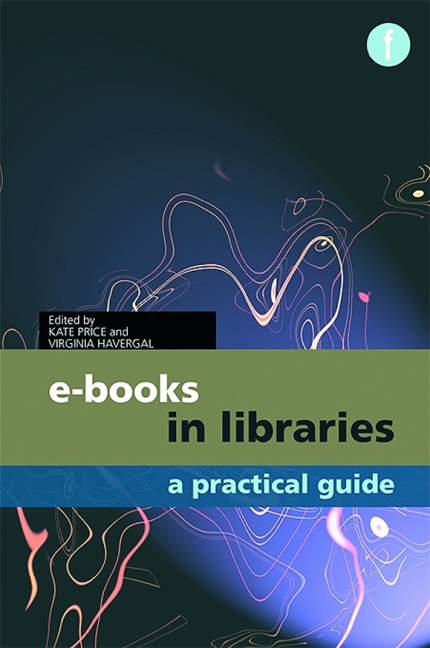Book contents
- Frontmatter
- Contents
- Preface
- The contributors
- Editors’ note
- Introduction
- Part 1 The production and distribution of e-books
- Part 2 Planning and developing an e-book collection
- Part 3 Delivering e-books to library users
- Part 4 Engaging readers with e-books
- Part 5 The future of e-books
- Part 6 Useful information
Preface
Published online by Cambridge University Press: 08 June 2018
- Frontmatter
- Contents
- Preface
- The contributors
- Editors’ note
- Introduction
- Part 1 The production and distribution of e-books
- Part 2 Planning and developing an e-book collection
- Part 3 Delivering e-books to library users
- Part 4 Engaging readers with e-books
- Part 5 The future of e-books
- Part 6 Useful information
Summary
Despite the fact that e-books (electronic books) have been in existence for decades in various guises and added to library collections for several years now, there has been a noticeable lack of published manuals on the subject.
This is, we feel, due to the rapidly evolving nature of the market. There is now a plethora of different types of digital object which might be termed ‘e-books’ and a bewildering number of business and access models to match. It may be that many authors and publishers have been waiting for this situation to stabilize before committing to such a serious undertaking as a whole book on the subject.
However, the pace of change shows no signs of abating. If anything, now that e-books have come to the attention of the wider populace, the rate of growth is accelerating, with large collections of texts in e-formats becoming available to students, public library users and consumers alike, and with the revolution in internet-enabled mobile devices meaning that e-texts can be accessed at times and in locations that would have been impossible just a few years ago.
Therefore, the editors of this book felt that it would be timely to bring together a selection of practical information, best practice and case studies which would be of assistance to information and library professionals who are managing collections of e-books right now, even though it may be that some of the finer details will be out of date by the time of publication. We hope that it will be of interest to those who are just beginning to dip their toes in the water, as well as those who have been involved with e-books for years, and are interested to know what is happening at other libraries and in other sectors than their own. We also hope that it will be of interest to a wider audience, ranging from students of information and library studies to publishers who may currently be producing e-books or looking to do so in the future.
To bring together this work, we have drawn upon the expertise of a range of authors from diverse backgrounds, each of whom adds a valuable perspective. Inevitably, there is some duplication of subject matter across the chapters.
- Type
- Chapter
- Information
- E-books in LibrariesA practical guide, pp. ix - xiiPublisher: FacetPrint publication year: 2011



